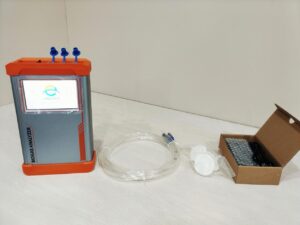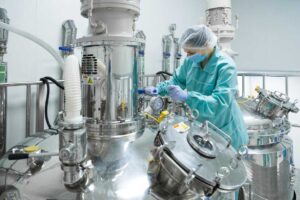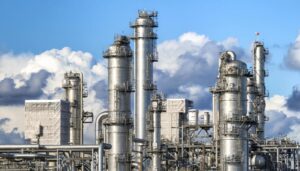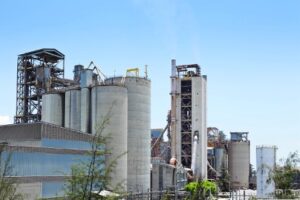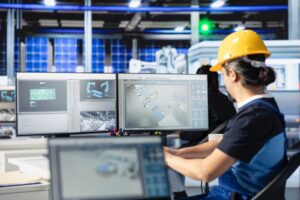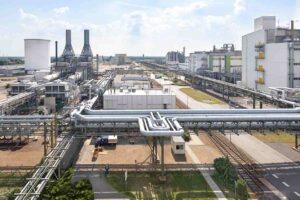Delve into the world of Emission Gas Analyzers, high-tech devices ensuring environmental safety. The goal here is unearthing their features, types, and applications. Also, a guide will be provided to select the most fitting Analyzer for specific requirements.
Key Features Of Emission Gas Analyzers!
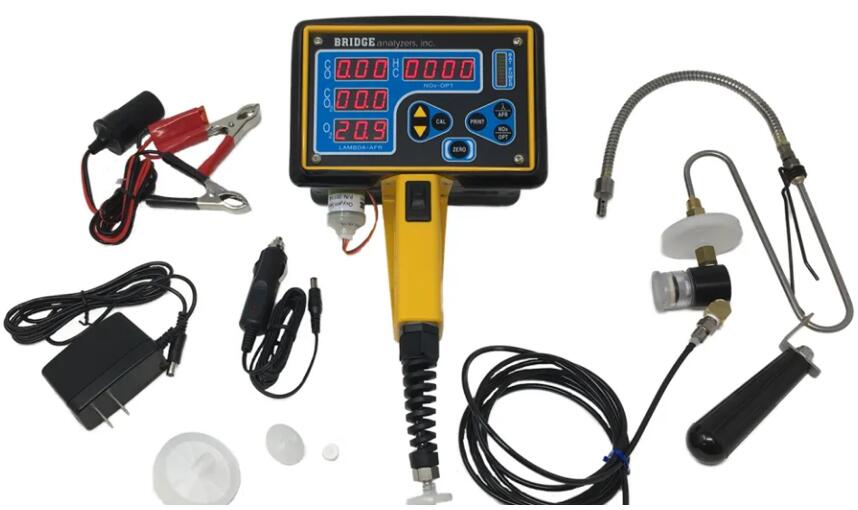
● Accuracy And Precision
Accuracy, precision – are the two cardinal points for any reliable analyzer. Each reading should mirror real-time gas concentration, leaving no room for error. Precision defines consistency.
A consistent reading, regardless of the number of tests, is a mark of a high-quality analyzer. Over time, the difference in readings should not exceed 1%, demonstrating impeccable precision.
Furthermore, a dependable device measures multiple gases simultaneously with less than 0.1% error margin. Thus, always opt for an analyzer that guarantees accuracy and precision.
● Wide Measurement Range
A broad measurement range is another critical feature. An analyzer should measure from low ppm levels to 100% volume. That’s a wide range, right? Yes, but essential.
A high-quality analyzer can detect gases from 0 to 5000 ppm for non-methane hydrocarbons, and from 0 to 25% for carbon dioxide.
A wide measurement range ensures versatility, catering to different applications, from industrial to environmental monitoring.
● Rapid Response Time
Time is of the essence in emission monitoring. The quicker the analyzer can provide readings, the better. An excellent device responds in less than 10 seconds, even for trace gases.
A swift response enables immediate corrective action, reducing potential damage. High-end analyzers, capable of achieving 95% of final reading in 15 seconds, are a worthy investment.
● Ease Of Calibration And Maintenance
Simplicity in calibration and maintenance is vital. Calibration ensures the analyzer remains accurate over its lifespan. Regular calibration, say, every 180 days, is recommended. Maintenance, too, should be straightforward.
Easy filter access and a user-friendly interface are must-haves. An analyzer requiring less downtime for maintenance saves time and resources.
● Durability And Reliability
Emission gas analyzers are often exposed to harsh environments. Hence, durability is a prime factor. The device should withstand high temperatures, up to 50°C, and humid conditions, up to 95% relative humidity. Reliability too, is paramount.
A trustworthy analyzer delivers accurate readings consistently, irrespective of environmental conditions. Therefore, always choose an analyzer built for endurance, and proven reliability.
| Key Feature | Explanation | Importance |
| Accuracy | Matches real-time gas concentration | Critical for reliable data |
| Precision | Consistency in readings | High-quality marker |
| Measurement Range | From low ppm to 100% volume | Versatility in applications |
| Response Time | Provides readings swiftly | Enables immediate corrective action |
| Calibration Ease | Simple calibration process | Accuracy over lifespan |
| Maintenance Ease | Straightforward upkeep | Time and resource saver |
| Durability | Withstands harsh conditions | Endurance in challenging environments |
| Reliability | Consistent accurate readings | Trustworthy data output |
Types Of Emission Gas Analyzers!
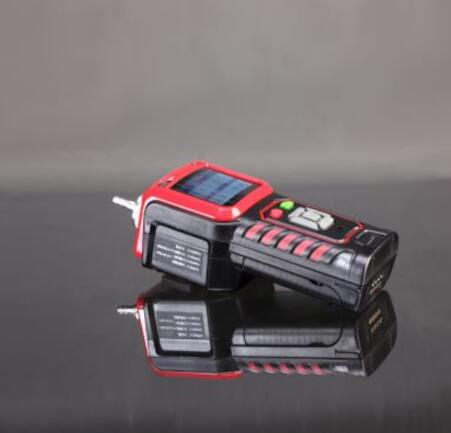
Diving into the world of emission analyzers, one finds a variety of types. Each type serves a specific purpose in detecting and measuring gas emissions.
● Infrared Gas Analyzers
Infrared analyzers work on a unique principle. Light, at infrared frequency, passes through a gas sample. The analyzer then measures the light absorbed. Each gas has its unique absorption characteristics. The more a gas absorbs, the higher its concentration.
Infrared analyzers are ideal for detecting gases like carbon dioxide and hydrocarbons. Their detection range can be between 0 and 1000 parts per million (ppm). These figures indicate that infrared analyzers can detect even minute amounts of gases.
Such precision is critical in environments where gas emissions need constant monitoring. Industrial facilities, power plants, and chemical plants are among the places that benefit from this technology.
Infrared analyzers are also known for their reliability. Their performance remains consistent over time, providing accurate readings consistently. This feature makes them a trusted tool in emission analysis.
● Chemiluminescence Gas Analyzers
Chemiluminescence analyzers detect nitrogen oxides. These gases react with ozone inside the analyzer, producing light. The light emitted corresponds to the gas concentration.
The analyzer measures the light using a photomultiplier tube. The readings are accurate to within 0.1 parts per billion (ppb). This precision makes chemiluminescence analyzers extremely useful in monitoring air quality.
Chemiluminescence analyzers play an essential role in maintaining safe working environments. Factories, power stations, and urban areas can all benefit from their use. These analyzers are trustworthy, providing precise readings consistently.
● Photoacoustic Gas Analyzers
Photoacoustic analyzers use sound to detect gases. The gas sample absorbs infrared light, causing it to heat and cool rapidly. This rapid heating and cooling create sound waves.
The analyzer measures these sound waves to determine the gas concentration. Photoacoustic analyzers can detect gases such as methane, nitrous oxide, and sulfur hexafluoride. Their detection range is typically between 0 and 10,000 parts per million (ppm).
Photoacoustic analyzers are highly reliable. They provide accurate readings consistently. Industrial environments, laboratories, and research facilities are some of the places where these analyzers can prove invaluable.
● Flame Ionization Detectors
Flame ionization detectors (FIDs) are highly sensitive gas analyzers. They work by burning the gas sample and measuring the ions produced.
FIDs are ideal for detecting hydrocarbons. They have a detection range of 0 to 50,000 parts per million (ppm). Their high sensitivity makes them excellent tools for monitoring emissions in industries that use hydrocarbon fuels.
Like the other types of analyzers, FIDs are reliable tools. They consistently provide accurate readings. Their effectiveness and reliability make them a trusted choice in the field of emission gas analysis.
| Criteria | Infrared Gas Analyzers | Chemiluminescence Gas Analyzers | Photoacoustic Gas Analyzers | Flame Ionization Detectors |
| Working Principle | Light Absorption | Light Emission | Sound Production | Ion Measurement |
|
Ideal for Detecting | CO2, Hydrocarbons | Nitrogen Oxides | Methane, N2O, SF6 | Hydrocarbons |
| Detection Range (ppm/ppb) | 0-1000 ppm | 0.1 ppb | 0-10,000 ppm | 0-50,000 ppm |
| Applications | Industrial Facilities, Power Plants, Chemical Plants | Factories, Power Stations, Urban Areas | Industrial Environments, Laboratories, Research Facilities | Hydrocarbon Fuel Industries |
| Reliability | High | High | High | High |
| Accuracy | High | Extremely High | High | High |
Applications Of Emission Gas Analyzers!
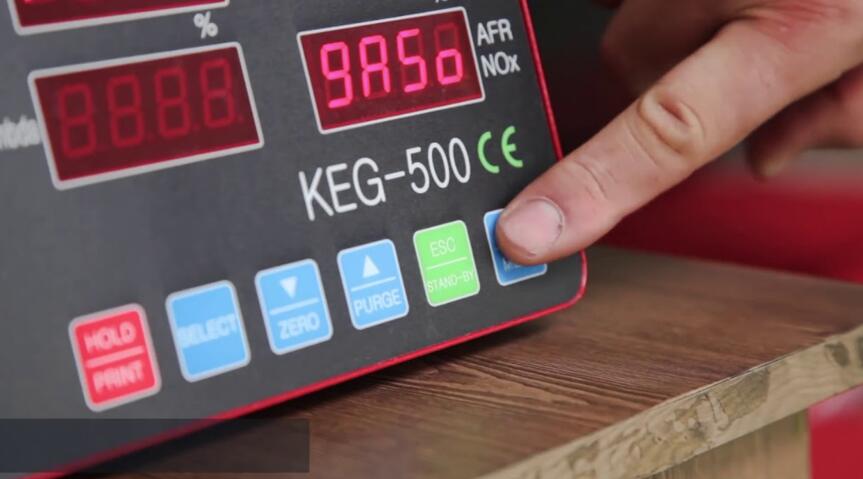
Emission Gas Analyzers play crucial roles across numerous fields. Their versatility adds value to various sectors, from automotive industries to environmental monitoring.
● Automotive industry
In the automotive industry, Emission Gas Analyzers measure vehicle exhaust gases. Analyzers assist in reducing CO2 emissions, helping manufacturers meet EPA regulations.
NOx and SO2 are other harmful gases assessed, pinpointing possible issues within the combustion process. With periodic inspections, emission norms compliance becomes achievable. Moreover, maintaining optimal engine performance ensures fuel efficiency, a key benefit.
● Power plants
Power plants use Emission Gas Analyzers for combustion efficiency monitoring. By analyzing CO, CO2, and O2 levels, operators can optimize fuel usage. Continual monitoring prevents excessive pollutant emissions, ensuring adherence to environmental standards.
Overall, the critical role of analyzers in power plants is to aid in maintaining environmental sustainability.
● Industrial manufacturing
Industrial manufacturing greatly benefits from Emission Gas Analyzers. During production, various gases get released. The role of the analyzer is to identify and quantify these emissions.
Regular monitoring leads to enhanced workplace safety, decreased environmental impact, and improved process control.
● Environmental monitoring
Emission Gas Analyzers serve vital functions in environmental monitoring. They assess air quality by detecting harmful pollutants.
Identifying emission sources enables targeted reduction strategies, contributing to healthier ecosystems. Accurate real-time data provided by analyzers are key to proactive environmental management.
● Medical research
In medical research, Emission Gas Analyzers offer unique insights. Understanding breath components helps diagnose diseases like asthma or chronic obstructive pulmonary disease (COPD). Breath analysis research, enabled by gas analyzers, fosters innovative approaches to disease detection and treatment.
● Aerospace engineering
Aerospace engineering finds Emission Gas Analyzers indispensable. They ensure fuel combustion efficiency in jet engines, affecting aircraft performance. The analyzers also monitor cabin air quality, essential for crew and passenger health during flights.
● Food and beverage production
Food and beverage production benefit from Emission Gas Analyzers. They monitor CO2 levels in carbonated drinks or during fermentation processes.
Ensuring correct CO2 concentration is crucial for product quality and safety. Thus, gas analyzers contribute to improved consumer satisfaction and regulatory compliance.
Maintenance and Care of Emission Gas Analyzers!
Regular Inspection: For optimal performance, conduct a thorough inspection every six months. Over time, dust and dirt can impair the functionality of your emission gas analyzer. Ensuring cleanliness helps to maintain accurate readings.
Each inspection involves checking for visible damage. A small flaw can lead to a big problem if left unchecked. On completion, make a note of any issues found. Fix them promptly to avoid further complications. Hence, frequent inspections are key to extending the life of your equipment.
Software Updates: Your emission gas analyzer has a brain too, the software. Keep this brain updated regularly. Manufacturers often release new software versions. These include improvements for better results and smoother operation.
Up-to-date software ensures the best performance from your device. Hence, always be in sync with the latest software updates for consistent and accurate measurements.
- Calibration Checks: Regular calibration is a must. Perform it every 30 days. Calibration helps maintain the accuracy of readings. It’s a process of comparing the analyzer’s measurements to a known standard. If a deviation is found, adjustments are made. Calibration ensures you get the most accurate readings, essential for emission control.
- Battery Care: Proper battery care is vital. A fully charged battery is a must for continuous operation. Always recharge the battery after use. Never let it drain completely. Depleted batteries can affect the analyzer’s performance. Proper battery care results in uninterrupted testing and reliable readings.
- Periodic Servicing: Servicing by professionals is a must at least once a year. They possess the skills and tools to maintain your analyzer at peak performance. They can detect issues you might miss. Their expertise ensures every part of your analyzer is in top shape. Regular servicing contributes to efficient operation and a longer lifespan.
- Replacement of Worn Parts: Over time, parts can wear out. Regular checks help spot worn parts. Replace them before they fail. Timely replacement prevents damage to other components. This proactive approach ensures consistent and accurate readings from your analyzer.
- Use of Approved Consumables: Always use approved consumables. Unauthorized or low-quality consumables can harm your analyzer. The approved ones ensure safe operation and accurate results. Stick to them for the best performance and to protect your equipment.
- Storage: When not in use, store the analyzer correctly. Keep it in a clean, dry place free from dust. Proper storage extends the lifespan of your analyzer. Remember, taking care of your analyzer when it’s off duty is just as important.
- Training: Understand the correct operation of your analyzer. Incorrect use can cause damage and inaccurate readings. Proper training ensures you get the most out of your analyzer. Remember, the right knowledge is the key to excellent performance.
- Follow Manufacturer Guidelines: Adhere strictly to the manufacturer’s guidelines. They provide a roadmap for the best care and maintenance of your analyzer. Following them ensures a longer, trouble-free lifespan for your device. Trust the people who made your analyzer to know what’s best for it.
FAQs!
Q: What Does An Emission Gas Analyzer Do?
A:An emission gas analyzer serves a critical role in monitoring and controlling pollutants. These devices measure the concentration of specific gases in a sample.
By providing accurate data, they help maintain compliance with environmental regulations and improve air quality.
Q: Which Gases Do Emission Analyzers Detect?
A:Emission analyzers identify a wide variety of gases. Notably, they measure carbon dioxide (CO2), carbon monoxide (CO), nitrogen oxides (NOx), sulfur dioxide (SO2), and volatile organic compounds (VOCs). The analyzer’s sensitivity to these gases ensures precise measurements.
Q: Are Emission Analyzers Used In Vehicles?
A:Yes, indeed, vehicles employ emission analyzers. In automotive applications, these devices scrutinize exhaust gases for pollutants. By doing so, they support efforts to lessen environmental impact and optimize engine performance.
Q: How Precise Are Emission Gas Analyzers?
A:Precision stands at the core of emission gas analyzers. Advanced technology enables them to provide measurements with a high degree of accuracy.
With precision often exceeding 99%, these devices offer trusted readings for crucial environmental assessments.
Q: What’s The Role Of Analyzers In Air Quality?
A:Analyzers play a pivotal role in air quality management. By measuring pollutant gases, they provide data needed for effective control strategies. Consequently, their use can lead to reductions in air pollution and improvements in public health.
Q: Are There Portable Emission Gas Analyzers?
A:Yes, portable emission gas analyzers exist. Compact and lightweight, these devices offer flexibility for on-site measurements. They prove invaluable in situations where stationary analyzers are impractical or inaccessible.
Q: How Do Temperature Changes Affect Analyzers?
A:Temperature changes can impact an analyzer’s accuracy. To counteract this, many devices incorporate temperature compensation mechanisms. Such features ensure reliable readings even under fluctuating environmental conditions.
Q: Can Emission Analyzers Link To Control Systems?
A:Absolutely, emission analyzers can interface with control systems. This connectivity allows for real-time monitoring and automated adjustments. As a result, these devices contribute significantly to maintaining optimal operations and ensuring regulatory compliance.
Conclusion
Emission Gas Analyzers, with their diverse types and extensive applications, play an integral part in monitoring and preserving air quality.
Selection requires careful consideration of numerous factors including accuracy, reliability, and cost. To explore the best options for your specific needs, visit ESEGas – your trusted partner in environmental safety.






